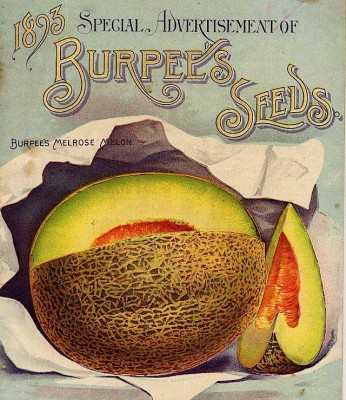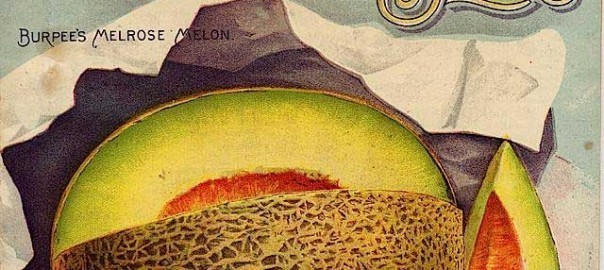Spring and early summer are the times of the year that lots of folks flip through seed catalogs and look at seed packets. I was one of those turning pages in a catalog recently and I noticed a few things that I didn’t quite understand. So, as usual, I did a web search to learn more about reading all of the details that are on the seed packets and in the seed catalogs. I came across this article by Kathy Anderson that was really informative. I’m hope you will get some useful tips.
HOW TO READ A SEED CATALOG
By Kathy Anderson
Long before the first daffodils of the year come into bloom, seed catalogs are delivered to our mailboxes to herald the arrival of Spring. A good seed catalog contains so much information, it can sometimes be overwhelming for a novice gardener to decide which seeds to buy for their garden. Today I’ll explain how to interpret catalog descriptions for vegetable, herb and flower seeds.
Let’s start with vegetable and herb seed descriptions, since they’re fairly straightforward. A typical catalog listing for these seeds will look something like this description for lettuce seeds:
“Black Seeded Simpson (45 Day) Crisp, tender and sweet. Heat resistant. Pkt. $1.25”

In this description, “Black Seeded Simpson” is the name of the lettuce variety. “45 Day” refers to the average length of time from when the seeds germinate until the plant matures and is ready to harvest. Keep in mind that this number should be used only as an estimation. The actual maturity time will vary slightly with your particular growing conditions and the weather. This number is a rough guide and should be used mostly as a comparison with other varieties and when planning when to plant successive crops.
That’s pretty simple, right? But catalog descriptions aren’t that cut and dried for every vegetable.
Take sweet corn, for instance. The catalog description may indicate the length you can expect each ear to be at maturity, and even how many rows of kernels to expect on each ear. But you may also see some odd letters after the names of the corn varieties offered in some catalogs. EH, se, sh2, su…it’s like a secret code. Actually, these letters tell you a little about the flavor you can expect long before you ever bite into the first sweet, tender ear.
First of all, when you see any of these designations after the variety name, you’ll know you’re looking at a hybrid corn variety. These hybrids have been developed for certain desirable characteristics, such as flavor, tenderness, or durability for shipping.
An “su” hybrid is a normal sugary hybrid. They tend to be creamy and sweet, but they don’t store well. An “su” hybrid should be eaten within a couple of days of harvest. This would be a good choice for a home garden, but a poor choice for a commercial corn grower. They tend to not cross pollinate with the neighbor’s corn.
An “se” variety is a sugary enhanced hybrid. These varieties have a smooth, butter texture, very tender kernels and a longer harvest period. Sugary enhanced hybrids also tend to not cross pollinate readily, and need not be isolated from your neighbor’s corn.
Supersweet hybrid corn is designated as “sh2”. These varieties have a gene that enhances their sweetness and produces firm, crisp and juicy kernels. The texture is not as creamy as “se” or “su” varieties, but supersweet varieties do hold their flavor for up to ten days after harvest, making them a good choice for commercial growers. Supersweet corn will cross pollinate readily with other corn varieties, resulting in starchy kernels, so it’s best to plant supersweet varieties at least 25 feet from other corn in your garden.
Now let’s talk about flower seeds.
Flowering plants are categorized as either Annuals, Biennials or Perennials. Annuals will complete their entire life cycle in one growing season. Their seeds are planted in the spring, the plant grows rather quickly and blooms that same season. Marigolds and sunflowers are examples of flowering annuals.
A biennial plant will spend its first growing season establishing itself and storing energy. But it’s not until the following growing season that a biennial will bloom. Foxgloves and hollyhocks are biennials.
Perennials are plants that will continue to grow year after year without being replanted. They typically go dormant over winter and grow back from their roots the following spring. Astilbe, hostas and daylilies are examples of perennials.
Before choosing seeds from a catalog, you’ll need to know which growing zone you live in. Growing zones, also known as hardiness zones, are based on the average minimum temperatures for each zone. A growing zone map is included in every good garden catalog, making it quite easy to identify your garden’s hardiness zone. Growing zones with higher numbers are in warmer climates, while growing zones with lower numbers are in the north.
For all perennials, biennials, trees and shrubs, catalogs will indicate the range of zones in which the plants will perform consistently. For instance, Blue Fountains delphinium is listed as hardy in zones 3-7. This plant would not be likely to survive a long, cold winter in zone 2, nor would it tend to grow well in the heat of zones 8 or 9.
For best results and the most satisfaction from your gardening efforts, always choose seeds for plants that are hardy to the growing zone you live in. Buy seeds from a reputable company and avoid discounted seeds left over from the previous year. Most seed companies print planting instructions for each seed variety right on the back of the seed packet. By following these instructions carefully and choosing your seeds wisely, you’ll be well on your way to having a terrific garden.
Did you learn anything? Sugary enhanced hybrids? To paraphrase Kathy Anderson…follow the directions on the packet and your success is almost guaranteed.
Have fun and Happy Gardening,
Dave and Trish
Kathy Anderson has been an avid gardener for many years and has grown tomatoes by the acre, along with many other vegetables, flowers and landscape plants. Kathy recommends http://www.freeplants.com as a great place to learn more about gardening. Article provided by http://gardening-articles.com.
